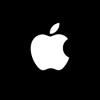
Breaking News
 Apple Issues Urgent Warning: Hang Up on All Unsolicited Support Calls
Apple Issues Urgent Warning: Hang Up on All Unsolicited Support Calls
 Star Catcher just set a 1.1 kW power?beaming record at NASA's Kennedy Space Center...
Star Catcher just set a 1.1 kW power?beaming record at NASA's Kennedy Space Center...
 An Anthropological Case for Limited Constitutional Government: Part Two
An Anthropological Case for Limited Constitutional Government: Part Two
 Should We Leave Our Health in RFK Jr.'s Hands?
Should We Leave Our Health in RFK Jr.'s Hands?
Top Tech News
 First totally synthetic human brain model has been realized
First totally synthetic human brain model has been realized
 Mach-23 potato gun to shoot satellites into space
Mach-23 potato gun to shoot satellites into space
 Blue Origin Will Increase New Glenn Thrust 15-25% and Make Rocket Bigger
Blue Origin Will Increase New Glenn Thrust 15-25% and Make Rocket Bigger
 Pennsylvania Bill – 'Jetsons Act' – Aims To Green-Light Flying Cars
Pennsylvania Bill – 'Jetsons Act' – Aims To Green-Light Flying Cars
 New Gel Regrows Dental Enamel–Which Humans Cannot Do–and Could Revolutionize Tooth Care
New Gel Regrows Dental Enamel–Which Humans Cannot Do–and Could Revolutionize Tooth Care
 Researchers want to drop lab grown brains into video games
Researchers want to drop lab grown brains into video games
 Scientists achieve breakthrough in Quantum satellite uplink
Scientists achieve breakthrough in Quantum satellite uplink
 Blue Origin New Glenn 2 Next Launch and How Many Launches in 2026 and 2027
Blue Origin New Glenn 2 Next Launch and How Many Launches in 2026 and 2027
 China's thorium reactor aims to fuse power and parity
China's thorium reactor aims to fuse power and parity
 Ancient way to create penicillin, a medicine from ancient era
Ancient way to create penicillin, a medicine from ancient era
Airseas installs its first fuel-saving auto-kite on a cargo ship

The full-size kite is estimated to save up to 20 percent of fuel burn and emissions.
The US$30-million, 154-meter (505-ft) Ville de Bordeaux, owned and operated by Louis Dreyfus, is currently on a long-term lease to Airbus, which uses it to move large aircraft structures between its distributed manufacturing plants around Europe and its final assembly plant in Toulouse.
Now, it's been fitted with a 500-square-meter (5,400-sq-ft) parafoil kite, plus all the deck and bridge equipment required to run the Seawing system. The Seawing deploys automatically, first emerging from storage on a trolley, then raising up from the deck on a mast to catch the wind, and finally being released on a long cable to grab the steady, strong winds over about 200 m (656 ft) above sea level.
At this point, it begins a figure-eight trajectory at a speed over 100 km/h (62 mph), monitored and controlled by an automated system running on the ship that's programmed to place the kite for maximum traction power. The Seawing computers also interface with the ship's navigation systems, monitoring forward wind conditions and re-routing the ship to take the most efficient path possible without affecting its arrival time.
The kite about to undergo testing is half the size of the full 1,000-sq-m (10,800-sq-ft) kite that'll eventually be deployed for commercial operation. Airseas estimates the full-size system will cut both diesel consumption and shipping emissions by a remarkable 20 percent. Germany's Skysails Group has tested similar devices up to 400 sq m (4,300 sq ft) in size, finding they replace up to 2 MW of power from the main engines under favorable wind conditions.
Airseas says the Seawing system can be retro-fitted to virtually all ship types, requiring only about two days for the conversion and not getting in the way of cargo operations in port. We'd certainly be interested to learn more about the economics of this kind of system; fuel costs for large freighters are enormous, and a 20 percent saving would add up to a significant figure very quickly.



